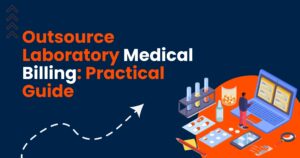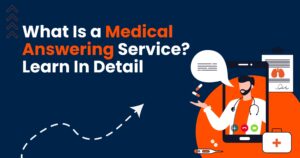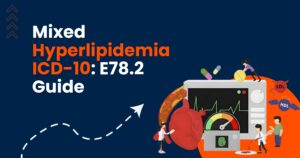In today’s dynamic healthcare landscape, accurate billing can make or break both. Billing systems for healthcare systems play an essential part in making healthcare simpler while guaranteeing payments arrive on time while protecting patients against fraudulent billing errors that might damage both sides.
As healthcare companies expand and implement more advanced technology solutions, understanding various types of medical billing systems becomes ever more essential. Each system is made to meet a distinct demand, from small private clinics to huge hospitals, and they all help the business run smoothly and follow healthcare rules.
We’ll talk about the three main types of billing systems in healthcare in this post. We’ll also talk about how they work and how they help with the general management of medical practices.
Understanding Billing Systems in Healthcare
Before we talk about the different varieties, let’s first talk about what a health billing system accomplishes.
A healthcare billing system is a digital or physical system that keeps track of patient information, medical codes, insurance claims, and payment records. The major goal is to make the financial cycle easier, from making an appointment to making the final payment.
Modern billing in hospital management systems works with electronic health records (EHR), scheduling tools, and insurance verification modules to make sure that every service is correctly recorded and billed.
Efficient billing systems assist lower the number of claims that are denied, speed up cash flow, and make sure that HIPAA and insurance rules are followed.
1. Closed Billing System
A closed billing system is often used in smaller clinics or individual medical practices. In this system, the billing process happens inside the office without any outside help. This method is based on a close relationship between the patient and the healthcare provider.
In this case, the patient pays the healthcare provider directly, and there are no insurance companies involved. It’s great for practices that give direct treatment or models that charge a fee.
Features of a Closed Billing System:
- The clinic keeps patient records and billing information.
- Having as few third parties as possible involved lowers the dangers of exchanging data.
- Easier billing process and collecting payments directly.
- Less money spent on administration because insurance processing isn’t needed.
Pros:
- Faster payment collection.
- Greater control over patient records and billing accuracy.
- Fewer compliance risks with insurance agencies.
Cons:
- Limited to smaller operations or practices.
- Not ideal for patients using health insurance.
Many private practitioners like this system since it is easy to use and focuses on the patient. But open or isolated billing systems are more flexible for bigger hospitals or healthcare facilities that deal with insured patients.
2. Open Billing System
The open billing system is used by a lot of hospitals, big clinics, and multi-specialty centers. It helps patients, healthcare professionals, and insurance companies communicate information, which makes sure that everyone is honest and works together.
This approach works perfectly with billing in hospital management systems and types of medical billing software that automate sending in claims, checking insurance, and keeping track of payments.
Features of an Open Billing System:
- You can give a lot of individuals your billing information.
- Works with pharmacy, insurance, and electronic health records (EHR) systems.
- Makes it easier to create and send claims.
- Gives you thorough reports and insights on how well your finances are doing.
Pros:
- Perfect for hospitals and networks with several departments.
- Things run more smoothly when they are automated and integrated.
- Makes processing claims more accurate and minimizes the number of denials.
Cons:
- Requires robust data security and compliance with HIPAA.
- Implementation can be expensive for smaller practices.
Most hospital physician billing systems use the open billing system as their main framework. This makes sure that payments are clear and quick. It keeps the revenue cycle running smoothly and efficiently by communicating with insurance networks and other hospital departments.
3. Isolated (or Decentralized) Billing System
An isolated billing system has parts of both open and closed systems, but each department or unit works on its own. Every department at a hospital might have its own billing team and software to handle payments, claims, and reports.
The radiology and lab departments, for example, may handle billing on their own, but all of the data eventually ends up in the hospital’s financial records.
Features of an Isolated Billing System:
- Billing freedom at the department level.
- Allows for modification based on the needs of each department.
- All the departments’ data comes together in one place for analysis.
Pros:
- Operations that are flexible and tailored to each department.
- Lessons delays and reliance between departments.
- Tracking mistakes and doing internal audits is easier.
Cons:
- May cause data duplication if not integrated properly.
- Requires strong coordination between departments.
This idea works best for large hospitals or healthcare organizations with several locations. It helps each unit make its charging process better without bothering the others.
Why Choosing the Right Billing System Matters
Choosing the right health billing system impacts more than just financial outcomes — it affects patient experience, staff productivity, and compliance. An ideal system should:
- Minimize claim denials and rejections.
- Integrate with electronic medical records.
- Simplify payment tracking and financial reporting.
- Ensure compliance with healthcare standards.
Cloud-based physician billing systems can assist practices by automating repetitive billing chores, keeping an eye on invoices for patients, and tracking claims in real time.
The Role of Technology in Modern Billing Systems
Modern medical billing software uses artificial intelligence (AI), automation and data analysis tools to speed up billing process and identify billing mistakes as quickly as possible, predict how much will come in for payments in future and keep an eye on claims that have yet to be paid out.
MDhelptek employs cutting-edge healthcare billing software to make sure that medical practices of all sizes are accurate, compliant, and efficient. Every step, from submitting a claim to posting a payment, is done with care and openness.
How MDhelptek Can Help Your Practice
MDhelptek’s job is to make healthcare operations easier using the most up-to-date digital tools. Our mission is to help healthcare providers save time, make fewer mistakes on bills, and enhance their financial results by making processes easier.
Our services include:
- Revenue Cycle Management: It is handling billing and claims from start to finish to earn the maximum money for your practice.
- Verification of Insurance Eligibility: To limit denials, ensure all claims include accurate insurance details for patients.
- Medical Credentialing Services: Help providers sign up and make sure they meet the rules set by payers.
- Patient Management Software: This makes it easy to schedule, coordinate, and talk to patients so they have a better treatment experience.
MDhelptek makes sure your clinic works smoothly and makes money by combining these solutions with the correct billing systems in healthcare.
Final Thoughts
The healthcare business needs billing systems that are correct, quick, and clear. Organizations may choose the appropriate billing system for their workflow and financial goals by knowing the three main types of billing system in healthcare: Closed, Open, and Isolated.
Closed systems may work well for small clinics, but major hospitals need open or isolated systems to do more things. Automation and integration are vital to success, no matter what kind of system it is.
Healthcare providers can get rid of administrative tasks, boost cash flow, and focus on what matters most: giving good care to their patients using MDhelptek’s advanced billing solutions.





